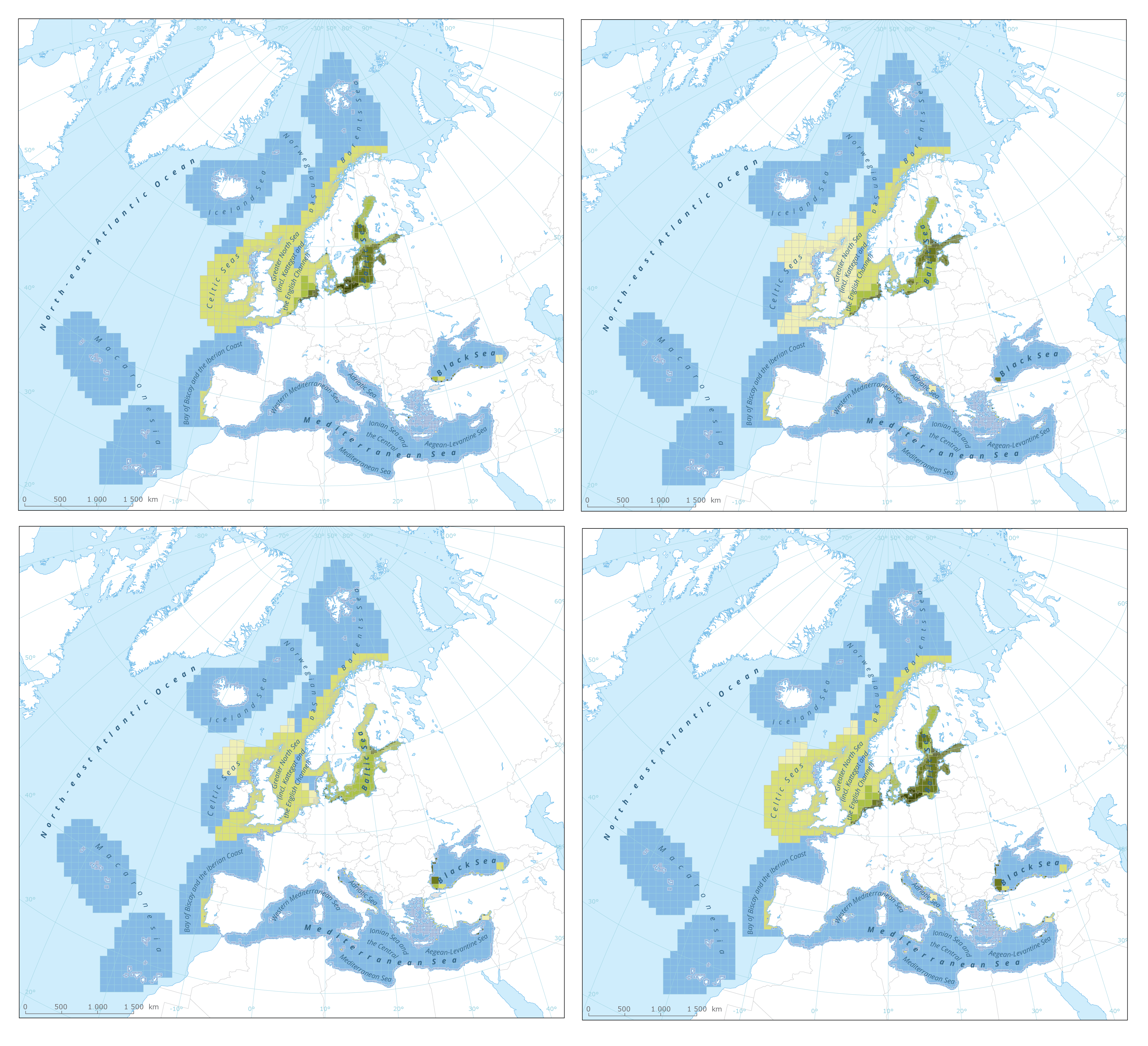nutrient balance
Type of resources
Available actions
Topics
INSPIRE themes
Keywords
Contact for the resource
Provided by
Years
Formats
Representation types
Update frequencies
Resolution
-

This dataset shows the increase/decrease of nitrogen input (kg/ha/yr) to agricultural soils comparing the year 2000 with the trend value 2000-2005 at 1 km resolution. Increase takes place where the trend value is higher than the reference value in 2000. Decrease is mapped when the trend value is lower than the value in 2000. Nitrogen input includes organic manure application, inorganic fertilizer input, atmospheric deposition and biological fixation. The data comes from the EEA nutrient accounts, developed by EEA and ETC-ULS, and is based on spatial reference data on crop and livestock distribution, yield and livestock statistics, and official conversion factors (see lineage for details). The geographic coverage is EU 27 (2007).
-

The total nitrogen input to agricultural soils for the year 2010 is represented in kgN/ha/yr at a 1 km resolution. Nitrogen input includes organic manure application, inorganic fertilizer input, atmospheric deposition and biological fixation. The data comes from the EEA nutrient accounts, developed by EEA and ETC-ULS, and is based on spatial reference data on crop and livestock distribution, yield and livestock statistics, and official conversion factors (see lineage for details). The geographic coverage is EU 27 (2007).
-

The dataset presents the results of classification of eutrophication status of the European seas using the HEAT+ tool. Eutrophication status is evaluated in five classes, where NPAhigh and NPAgood are recognised as ‘non-problem areas’ and PAmoderate, PApoor and PAbad are recognised as ‘problem areas’. The results are shown for 3 aspects of eutrophication: C1) Nutrient Concentrations, C2) Direct Effects, C3) Indirect Effects as well as the overall Eutrophication status (HEAT+). This dataset underpins the findings and cartographic representations published in the report "Nutrient enrichment and eutrophication in Europe's seas" (EEA, 2019).
 RUC Geo-Data catalogue
RUC Geo-Data catalogue